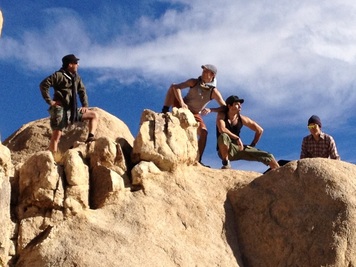 The idea of play as an avenue to gain a fresh perspective, to try out new ways of being, and of course to have fun in the process, has come into my mind a lot lately. In part due to the nature of my work providing play therapy to children, as play is their first language. Play is the primary way that children communicate and express themselves—using symbol, imagination, and spontaneous action, they give us an indication of what their inner world is like. Adults also benefit greatly from adding play into their daily diet. It helps us practice being more spontaneous, creative, free flowing, and shift our sometime static sense of ourselves. This brings me to another reason why play has been permeating my thoughts: Spring! This season whispers to (and sometimes screams at) us to consider it’s pervasive theme: creativity. Spring’s creative forces are all around us, which earth makes manifest by the shoots and flowers bursting forth out of our garden. It’s a good time to start a new endeavor, make art, reinvent ourselves, create and nurture life in all of its manifestations. This concept of play has been imbuing my psyche so thoroughly that when someone suggested an improvisation class to feel more comfortable speaking in public, I had a visceral response which prompted me to sign up for a course two days later. Improv sounded like a dynamic and playful way to explore and unpack this stuckness. In the class, we play games. When we think of games, there is usually some sort of inherent competition. But instead, these games are designed to encourage us to slow down our analytical minds, to bring ourselves completely to the present moment, to let ourselves fail (celebrate that we tried and move forward), to listen well, to be responsive, and to add on to what others are saying. (You might have heard: “Yes, and…” is more inclusive, collaborative, and moves things forward faster than “No”). Ah ha! These maxims of improvisation can be used for not only for speaking to an audience, but for successful communication and a thriving life. A life where we tap into our creativity regularly, where moment-to-moment awareness is more important than our past stories, where we don’t let fear get in the way of us trying out new activities and behaviors, and where we get to experience the rewards of working together. These ways of being are at the root of mindfulness practice: truly living in the present without our stories of our past or fears of our future, rejecting nothing, inviting in our feelings and sensations and being present with them yet not attaching ourselves to the outcome. When we are immersed in the moment, we experience a flow and live in a fuller way. Because really, life is improv. Comments are closed.
|
Author:
|
 RSS Feed
RSS Feed